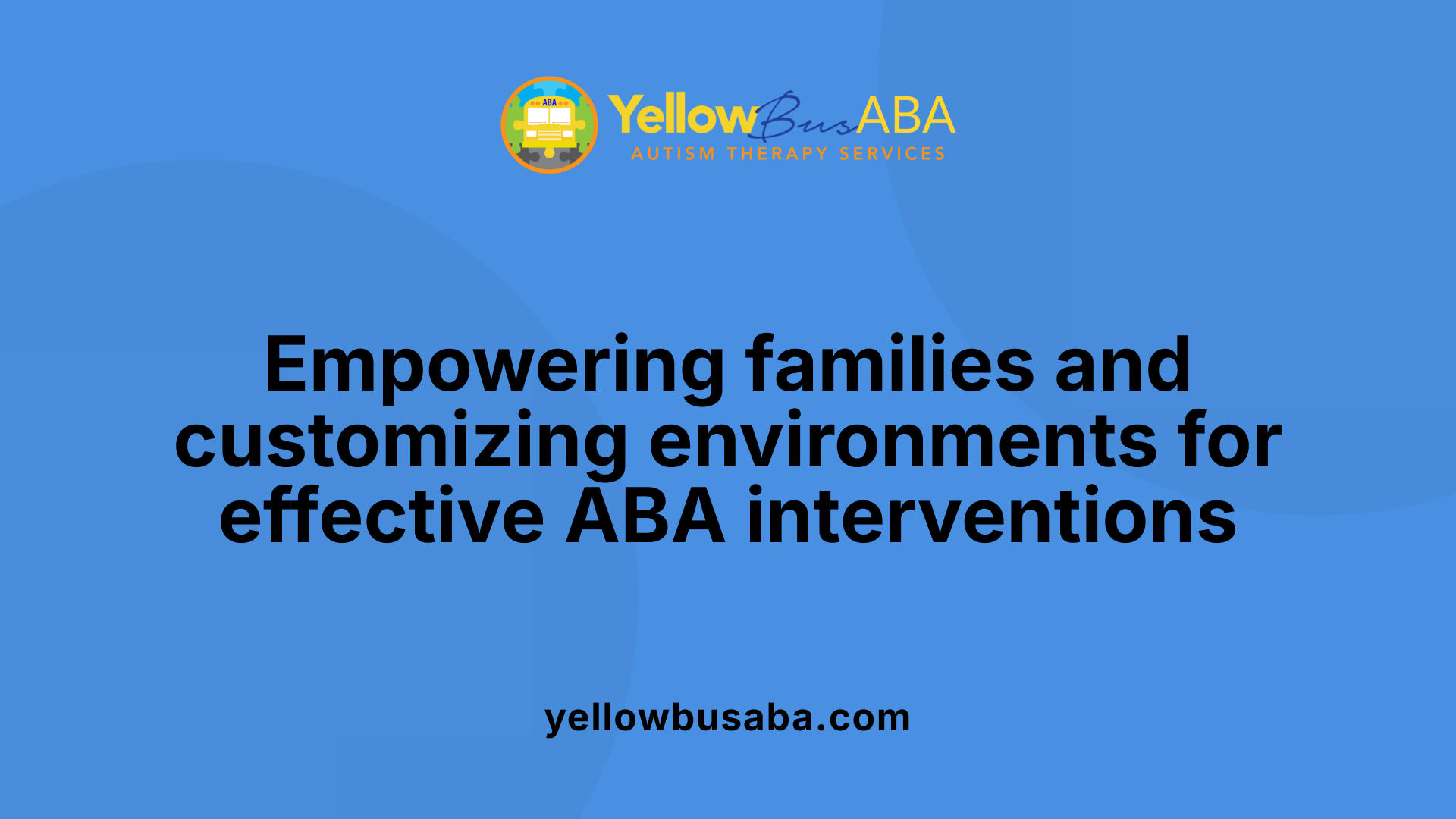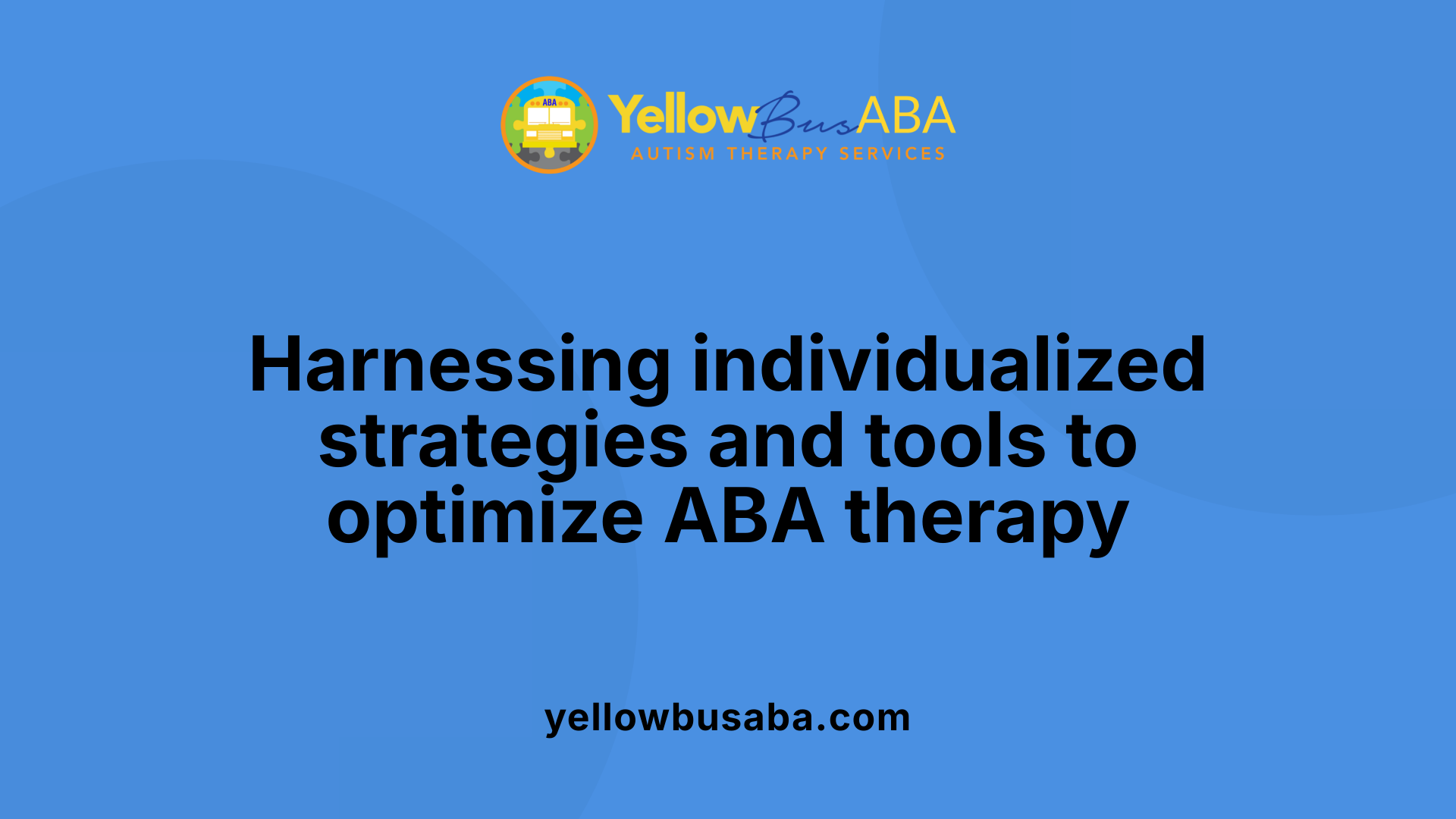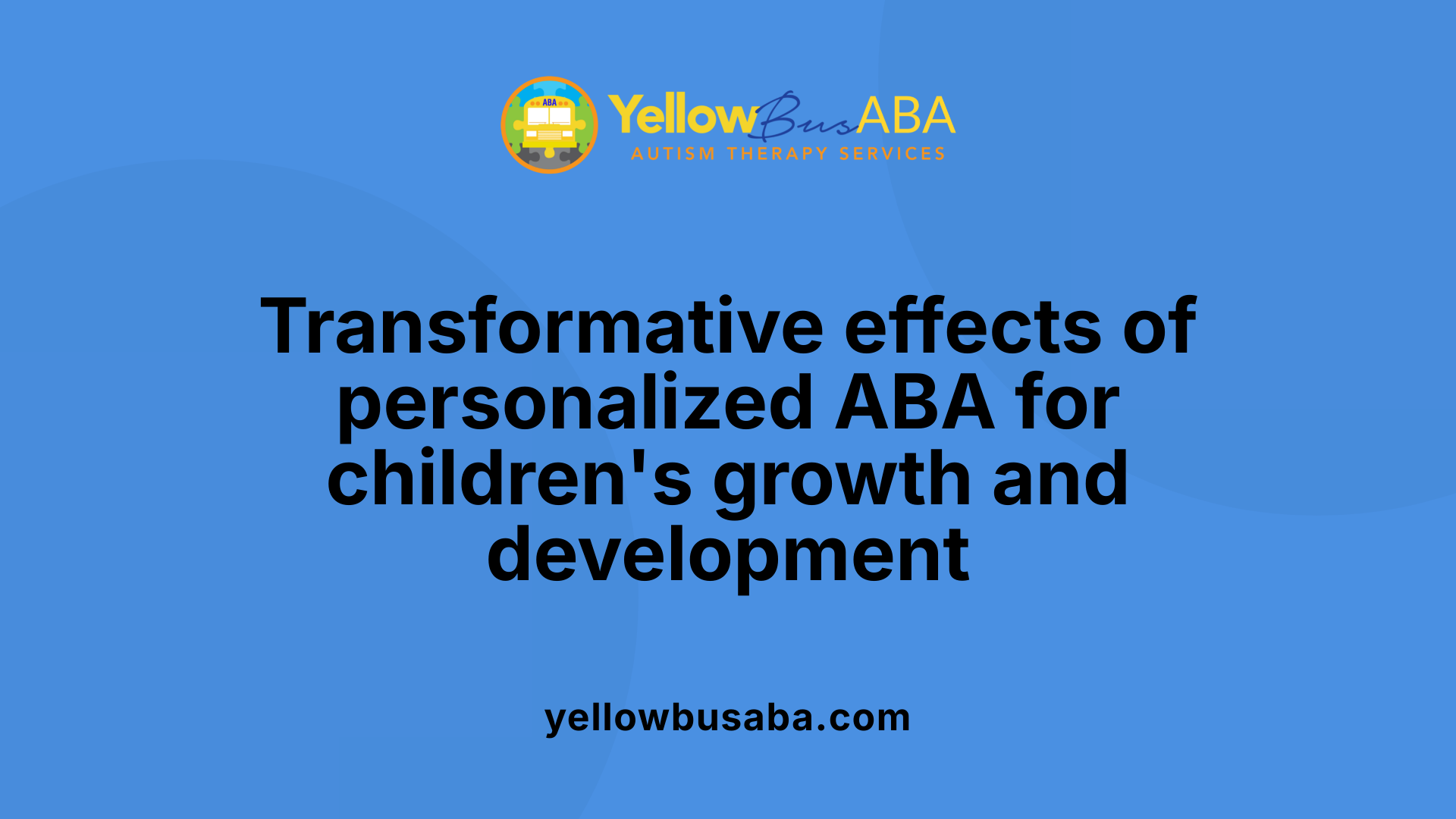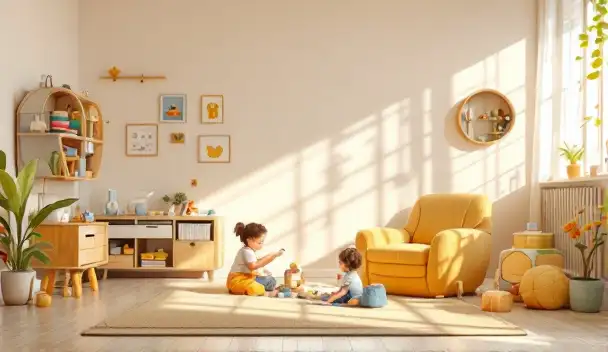Introduction to Individualized ABA Therapy at Home
At-home Applied Behavior Analysis (ABA) therapy has revolutionized how children with autism spectrum disorder (ASD) receive essential intervention. Tailored to meet each child's unique needs, this approach emphasizes personalization, family involvement, and the natural environment to foster meaningful progress. Understanding the principles and practices that make at-home ABA therapy highly individualized highlights why it is an effective option for many families, providing a flexible, engaging, and goal-oriented path to development.
Fundamentals of Personalization in In-Home ABA Therapy

What does the process of individualizing ABA therapy at home involve?
Personalizing ABA therapy at home begins with a detailed assessment of the child's unique profile, including their strengths, challenges, preferences, and routines. This initial evaluation helps create a tailored treatment plan targeting specific skills such as communication, self-care, and behavior management.
During therapy, structured sessions focus on real-world applications, with therapists actively training and involving parents to reinforce strategies consistently across daily activities. Data collection is integral throughout the process, enabling continuous monitoring of progress and adjustment of interventions as needed. These modifications make sure the therapy stays relevant and effective, accommodating the child's evolving needs.
Collaboration between families and professionals is crucial. Regular reviews and feedback sessions guide strategy refinement. Creating a supportive and distraction-free environment tailored to the child's needs, along with establishing routines, fosters engagement and helps generalize skills outside therapy, promoting overall development.
The Role of Family Involvement and Environment in Personalizing ABA

How can parents effectively implement ABA strategies tailored to their child's needs at home?
Parents can successfully implement ABA strategies at home by establishing consistent routines that make the child's environment predictable and safe. Using visual supports like schedules, timers, and checklists helps children understand what to expect and promotes independence.
Positive reinforcement is a fundamental technique; rewarding desired behaviors immediately with praise, preferred activities, or tangible rewards encourages repetition. Modeling and demonstrating behaviors clearly and patiently foster learning.
Working closely with a certified behavior analyst (CBA) or trained therapist provides essential personalized guidance. These professionals can train parents in ABA techniques, help interpret data, and adjust strategies based on progress.
Tracking daily progress with charts or notes allows parents to see what techniques are most effective, enabling data-driven decision-making.
Participating in parent training programs, online workshops, or community support groups enhances skills and confidence, ensuring consistent and effective application of ABA methods at home.
How does the home environment enhance the implementation of ABA interventions?
A familiar, safe home setting significantly benefits ABA intervention effectiveness. It reduces anxiety and resistance, helping children engage more freely in therapy activities.
Within the home, skills can be practiced in natural routines—mealtime, play, dressing, or personal hygiene—enabling better skill generalization.
Setting up a dedicated, clutter-free therapy corner with minimal distractions and good lighting creates an optimal space for sessions.
Visual supports, like picture schedules or timers, can be integrated effortlessly into daily routines, reinforcing structure.
Choosing activities and materials that align with the child's interests—such as favorite toys, themes, or sensory items—serves as motivation to participate.
Crucially, active involvement of family members ensures continuous reinforcement. It allows for immediate practice, feedback, and consistency, making therapy an integrated part of everyday life.
In what ways does involving family strengthen the effectiveness of ABA therapy at home?
Family participation makes ABA therapy more consistent and meaningful. When family members, including siblings, are involved, they help reinforce skills and behaviors outside structured sessions.
This active engagement improves communication and understanding within the family, fostering a supportive environment that encourages growth.
Siblings and parents learn to use reinforcement techniques such as praise or rewards, creating multiple opportunities for the child to practice skills.
Involvement also helps in behavioral management, as family members better understand triggers and preferred strategies.
Immediate feedback from family members allows therapists to make quick adjustments, increasing the therapy's relevance and success.
Building a teamwork approach motivates the child, reinforces independence, and enhances trust and emotional bonds within the family.
| Aspect | Details | Benefits |
|---|---|---|
| Family participation | Active involvement of parents and siblings | Reinforces skills, improves communication, boosts confidence |
| Environment setup | Dedicated, distraction-free space with visual supports | Increases engagement, facilitates natural routine practice |
| Integration of routines | Embedding therapy into everyday activities like eating and dressing | Promotes generalization and independence |
| Monitoring and feedback | Tracking progress, immediate reinforcement | Adjusts strategies and maintains motivation |
Tailoring ABA therapy to include family involvement and optimizing the home environment creates a personalized, effective treatment plan. This approach ensures skills are generalized across settings, behaviors are reinforced consistently, and the child's growth is supported comprehensively.
Techniques and Tools for Personalization in ABA

What methods are used to adapt ABA interventions to each child's unique requirements?
ABA therapy is highly individualized, beginning with a comprehensive assessment of the child’s abilities, challenges, interests, and developmental stage. This initial evaluation guides the creation of a tailored treatment plan that addresses specific needs and goals.
To match each child's learning style, therapists employ various teaching approaches such as discrete trial training, naturalistic teaching, and task analysis. These methods are modified to suit how the child learns best, making the therapy more effective.
Motivating rewards are individualized by conducting preference assessments to identify what the child finds most reinforcing—this could include favorite toys, activities, or praise. These rewards are then used consistently to motivate behavior.
Environmental adjustments are made to better suit the child's comfort and learning preferences. This may include choosing communication modes like picture exchange systems or gestures.
Involving parents and caregivers is crucial; they are trained to understand and support the intervention techniques, helping to maintain consistency outside of therapy sessions.
Ongoing progress monitoring allows therapists to adjust strategies as the child's needs evolve, ensuring the approach remains relevant and effective.
Overall, this personalized process ensures each child receives a tailored intervention that maximizes their potential for growth and skill acquisition.
How do visual supports and positive reinforcement aid in individualizing ABA therapy?
Visual supports like schedules, picture cues, and timers are customized to each child's developmental level and communication style. These tools help children grasp what they are expected to do, understand the sequence of activities, and prepare for transitions, which reduces anxiety and increases engagement.
By tailoring visual supports to the child's preferences and understanding, therapists make learning more accessible and less intimidating. For example, some children might respond better to simple picture schedules, while others benefit from visual timers that help anticipate the length of tasks.
Positive reinforcement is another cornerstone of personalized ABA therapy. Rewards such as praise, preferred toys, or tangible incentives are immediately provided after the child demonstrates a targeted behavior.
Reinforcers are selected based on what motivates the individual child, determined through preference assessments. This ensures that reinforcement is meaningful, increasing the likelihood of behavior repetition.
Combining visual supports with positive reinforcement creates a customized environment where children feel understood and motivated. This approach supports the development of new skills and reinforces positive behaviors tailored to their unique needs.
| Technique | Description | Personalization Element | Example |
|---|---|---|---|
| Visual Supports | Structured visual cues | Developed based on child's communication and comprehension | Picture schedule for daily routines |
| Positive Reinforcement | Rewards for desired behaviors | Selected according to child's preferences | Favorite toy or praise |
| Data Collection & Monitoring | Recording progress to guide adjustments | Tailored goals and strategies based on progress | Weekly progress charts |
| Behavior Analysis | Identifying triggers and functions of behavior | Context-specific understanding | Addressing a child's sensory sensitivities |
This personalized approach ensures ABA therapy is targeted, engaging, and effective, fostering meaningful progress in each child's development.
Implementing Strategies and Monitoring Progress

How are ABA interventions adapted to each child's unique requirements?
The customization of ABA therapy to fit individual children starts with a thorough assessment that pinpoints their strengths, challenges, interests, and developmental stage. This initial evaluation helps therapists craft personalized treatment plans tailored to the child's specific needs.
Different teaching modalities such as discrete trial training, naturalistic teaching, and task analysis are adjusted based on the child's preferred learning style and responsiveness. For example, if a child shows a preference for visual cues, visuals or picture schedules may become central to their learning process.
Reinforcement strategies are carefully chosen through preference assessments to ensure motivation. Whether a child responds best to praise, favorite toys, or small rewards, these are incorporated to boost engagement and reinforce positive behaviors.
Environmental changes, communication methods—like using gestures or visual supports—and activity choices are all personalized to create a comfortable, effective learning space.
Active participation from parents and caregivers, plus ongoing feedback and flexibility from therapists, helps keep interventions aligned with the child's changing needs. This personalized approach makes ABA therapy more relevant, engaging, and ultimately more successful.
What role does ongoing data collection and progress monitoring play in individualizing ABA therapy?
Consistent data collection and regular monitoring are the backbone of tailored ABA treatment. Therapists and families meticulously record responses to interventions, tracking behaviors and skill advancement during each session.
This ongoing data collection enables real-time assessments of what strategies are working and where adjustments are necessary. By analyzing this information, therapists can fine-tune techniques, set achievable goals, and shift focus as the child's skills and needs evolve.
Data-driven decision-making ensures that therapy remains targeted and effective, providing clear evidence of progress or areas requiring additional support. This continual feedback loop maintains the therapy’s relevance and promotes sustained growth.
Regular monitoring not only helps in refining techniques but also motivates families by visibly measuring improvement, making the process more transparent and encouraging consistent effort.
How does understanding triggers and applying behavior analysis contribute to personalizing ABA strategies?
Behavior analysis relies heavily on recognizing what triggers certain behaviors and understanding the consequences that follow. This knowledge allows therapists and caregivers to develop strategies that proactively address issues at their root.
Identifying antecedents—such as environmental factors, sensory overload, or social situations—means interventions can be tailored to modify or control these triggers. For example, if a child's tantrums are triggered by loud noises, strategies might include providing noise-canceling headphones or calming activities.
Replacing maladaptive behaviors with more appropriate responses—through teaching alternative skills—becomes more effective once triggers are understood. This targeted approach reduces problematic behaviors and promotes positive skills development.
Applying insight from behavior analysis, interventions are crafted based on the child's specific environment and triggers, making them more relevant and likely to succeed in everyday settings.
Conclusion: The Impact of Personalization in ABA Therapy

How does at-home ABA therapy support children's developmental progress through personalization?
In-home ABA therapy offers a highly tailored approach that directly benefits a child's growth and development. The process begins with a thorough assessment conducted by trained professionals, such as board-certified behavior analysts (BCBAs). This assessment helps identify each child's unique skills, strengths, challenges, and behavioral patterns.
Based on this information, a customized treatment plan is crafted. These plans focus on promoting meaningful skill development, including communication, social interaction, independence, and reduction of problematic behaviors. By tailoring strategies to be relevant and engaging, therapists ensure that interventions are effective and motivating.
Integrating therapy with daily routines and family involvement reinforces learning and supports consistency. The natural environment of the home makes it easier for children to generalize new skills to real-life situations, fostering emotional well-being and increasing independence.
Moreover, evidence-based techniques like positive reinforcement and functional skill training are systematically applied within the child’s familiar surroundings. This personalized approach maintains engagement, encourages positive behaviors, and addresses specific challenges effectively.
In summary, personalized in-home ABA therapy helps children progress by making interventions relevant to their everyday lives, strengthening strengths, addressing needs, and promoting a sense of accomplishment and growth within their own familiar environment.
What makes in-home ABA therapy effective and individualized?
The success of in-home ABA therapy is rooted in several crucial components. First is the comprehensive initial assessment, which provides a detailed understanding of the child's current abilities and behavioral challenges, informing the creation of specific, targeted goals.
Second, active family involvement is essential. Parents and caregivers are trained to implement ABA techniques consistently and reinforce learned behaviors in everyday settings. Their role ensures that skills are practiced across various situations, promoting generalization.
Third, ongoing data collection and regular progress monitoring allow therapists to evaluate effectiveness continuously. Data-driven decisions enable real-time adjustments, ensuring that interventions stay relevant and impactful.
Fourth, the use of evidence-based strategies, including positive reinforcement and visual supports, personalizes each session to the child's preferences and needs, making learning engaging and relevant.
Lastly, optimizing the home environment by creating a dedicated, distraction-free space for therapy enhances focus and participation. This setup fosters an atmosphere of safety and comfort where the child can explore and learn.
By combining these elements, in-home ABA therapy becomes a dynamic, personalized process tailored to support each child's unique developmental journey.
Final Thoughts on Personalizing ABA at Home
In-home ABA therapy exemplifies an individualized approach that recognizes and responds to each child's unique profile, needs, and circumstances. Through comprehensive assessments, collaborative family involvement, strategic use of visual supports, and ongoing data monitoring, this tailored approach maximizes developmental gains. Supporting children in familiar settings not only fosters comfort and engagement but also promotes the acquisition of life skills that translate into greater independence. As research continues to underscore the importance of personalization in therapy, families and professionals together can ensure that each child receives the most effective, meaningful support on their developmental journey.
References
- ABA Therapy at Home: Pros and Cons - Family Hope Solutions
- Supporting Your Child's ABA Therapy at Home: A Parent's Guide
- Unlocking Potential at Home: What is In-Home ABA Therapy?
- In-Home ABA Therapy: How to Prepare Your Children - Opya
- In-Home ABA Therapy for Autism
- In-Home vs. In-School – Navigating the Landscape of ABA Therapy
- ABA Therapy at Home: a Definitive Guide | BIFA






